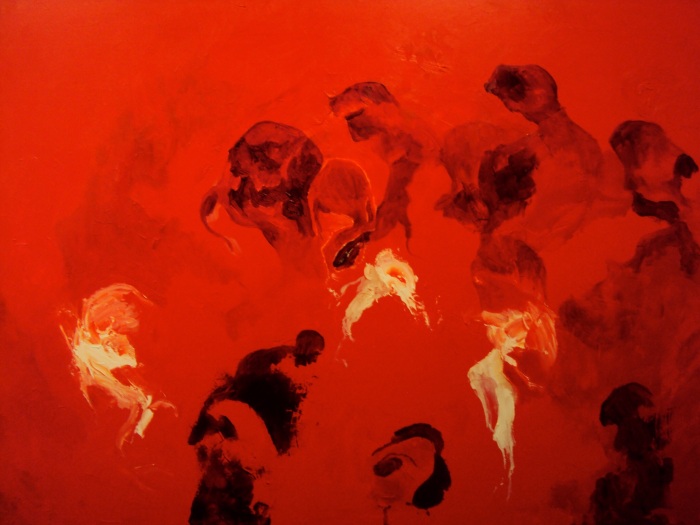
Magma Matter Execution (2012) by Nicholas Peart
I am often asked by people to explain my paintings. ‘What are they about?’ is a common question. For a long time I found it difficult to translate the meaning of my paintings into words since the process is very personal and involves deep introspection. When people did ask the question I invariably gave them the reply, ‘My feelings. I paint my feelings’. This is one of the most succinct and sincere ways of explaining the meaning of my paintings yet I often felt that such a response just didn’t wash with some people.
All of my inspiration comes from within; through journeys into the deep chambers of my eternal, spiritual and immortal being. This is the part of me that is really me. The truth. In Hinduism and Buddhism this part of the self is known as atman. Yet often I feel very separated from this as I am immersed in the external environment of this life; a player on a stage where much of the cast has been programmed to be increasingly separated from their true being.
When I am immersed in the deep meditative process of painting, I feel increasingly connected with my true eternal being. It almost feels like it’s not me painting but my spirit. In my most inspired and transcendental moments of the painting process it is my eternal spirit which guides me. In these moments there is no chasm between my conscious and my unconscious. Being in this state makes me think of some of the earliest prehistoric civilisations. Back then, the world was a much less complex and complicated place to the one it is today. Especially the time before words. I think of the San rock art paintings found across parts of Southern Africa and Aboriginal rock art paintings from Australia. The San people of Southern Africa and the Aboriginal people of Australia fascinate me greatly since their culture goes back tens of thousands of years. But what’s more, their culture is profoundly spiritual and this can be seen clearly in their art; their oneness with the world and nature, and their high levels of awareness. In many ways it’s their lives and methods of working which inspire me just as much as the work itself, because of their deep spirituality.
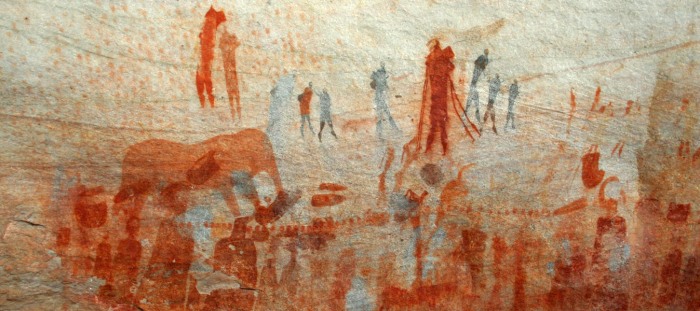
San rock art – Cederberg, South Africa
One thing that the San and Aboriginal people have in common is that much of their land is vast desert. For many people such a terrain is inhospitable and lonely; especially if one is very separated from themselves. In this state of being such a person would very quickly find the desert intolerable and isolating. It’s almost like the desert richly rewards those who are spiritually connected (and by extension at one with it) and makes life a living hell for those who are detached from their eternal soul. With a higher state of consciousness the desert begins to truly reveal itself. In a sense my paintings are like deserts, which only become alive as one becomes more connected with themselves. And this is sometimes a great problem I encounter as to some people my paintings appear quite alien and foreign to them. I fully expect this and it does not offend me when people openly tell me that they don’t understand them. My paintings are interactions with the spiritual world and these interactions take place during the painting process. One could then argue that in order to get to the core of my work it would be essential to observe me as I paint. You can do this and you can even do this without me being aware of being observed. But to really understand the processes would involve fully connecting with all levels of my consciousness.
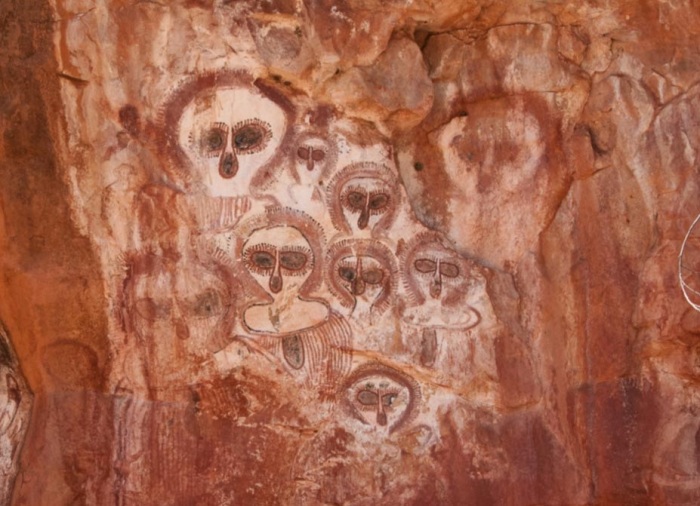
Wadjina Aboriginal rock art – Kimberly, Australia
I find that the paintings of the American artist Don Van Vleit (better known as Captain Beefheart) have much in common with the art of those early prehistoric civilisations. What’s also interesting is that when Van Vleit retired from making music and dedicated himself fully to painting in the early 1980s, he lived in a remote part of Northern California. And by immersing oneself in his work one can see the deep connection. Like the San and Aboriginal people, his true spiritual home was in nature. The place where his true being could glow white hot. Take him out of this environment and plop him in a studio in New York, London or Berlin, he would be like a flower without water.

Crepe And Black Lamps (1986) by Don Van Vliet
I like to call my painting technique Spiritual Coding. In the digital world in which we currently live the word coding is used a lot. This of course refers to computer programming. A language for this age. And when I look at my paintings I am also using my own language. A language created through interacting with my ‘inner being’ and this I call Spiritual Coding. My paintings are in many ways remnants of this. Tangible photographs almost of my eternal spirit. Although they don’t capture the processes of my work they are residue formations of intense spiritual journeying and internal searching.
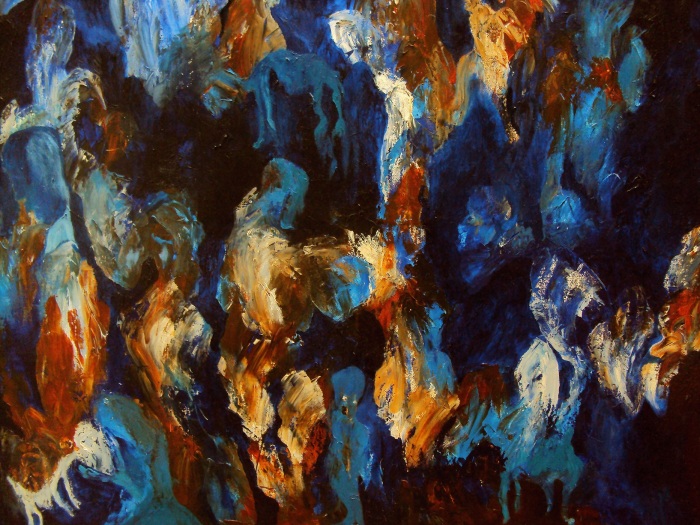
A Winter In Crowland (2008) by Nicholas Peart
Remaining on the subject of Spiritual Coding, symbols are important in my paintings. The American artist Philip Guston created his own unique symbols, language and world. Even if his world was very bleak and one of hardcore isolation. A dystopian spirituality. But through connecting with his paintings one can see that he embraced this insurmountable at-sea pain and isolation. Works offering no hope or salvation. For the majority of people (including myself) such a level of alienation would be intolerable and very difficult to embrace and accept. But it’s amazing how secure Guston seems to be in this vacuum. And that’s what makes his paintings very striking, visceral and distinct. They are pure undiluted archives of raw pain. I think of Van Gogh and how, even though he was often in the grip of profound sadness and anxiety, he produced some of the most beautiful paintings of all time. Yet Guston’s paintings are anything but beautiful. He was not looking to turn pain into beauty. He was more interested in turning pain into more pain. The painter Francis Bacon is the closest artist to Guston in this respect. Merciless insatiable masochists. Perhaps there is absolutely nothing of the spiritual in Guston’s work and he was always an enigma to himself but his comfort in the most acute thresholds of pain and loneliness is epic.
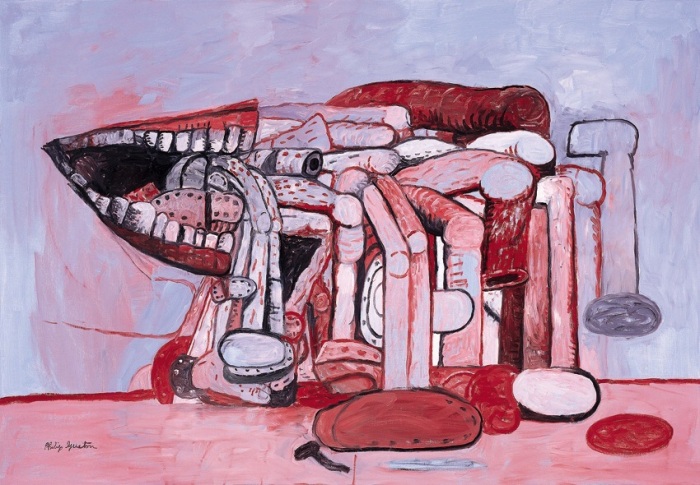
Painter’s Form II (1978) by Philip Guston
Luck and chance play enormous roles in my paintings. My soul brothers here are the painters Jackson Pollock and Francis Bacon. And like them I never make sketches or engage in preliminary studies. And why would I? After all this is completely against my way of working and, more significantly, my raison d’être. I can’t plan what I am going to paint. If luck and chance weren’t integral parts of the painting process, I don’t think I would ever paint. Uncertainty is extremely important.
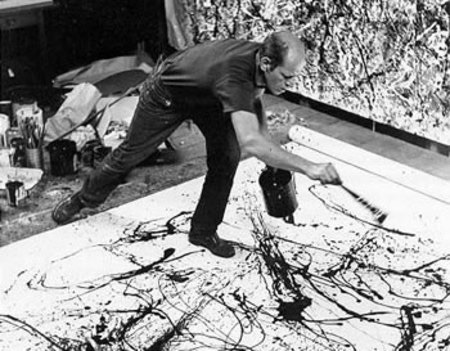
Jackson Pollock
The work of both Jackson Pollock and Francis Bacon have their own unique and idiosyncratic qualities yet what unites them is their spontaneity. But there’s a more important quality which unites them and that is their energy. Wild, untamed, animal energy. Free of even the most minute inhibition. The primal way Pollock dripped paint and the ferocious and feral way Bacon attacked the canvas. Almost like a serial axe murderer taking a swing at his next victim. I can relate to this (not the axe murderer) since in much of my work when I first apply paint to the canvas either with a brush or a palate knife I literally lunge at it and let my inner self do the work. And sometimes I get so exhausted by the end of this process I need to rest.
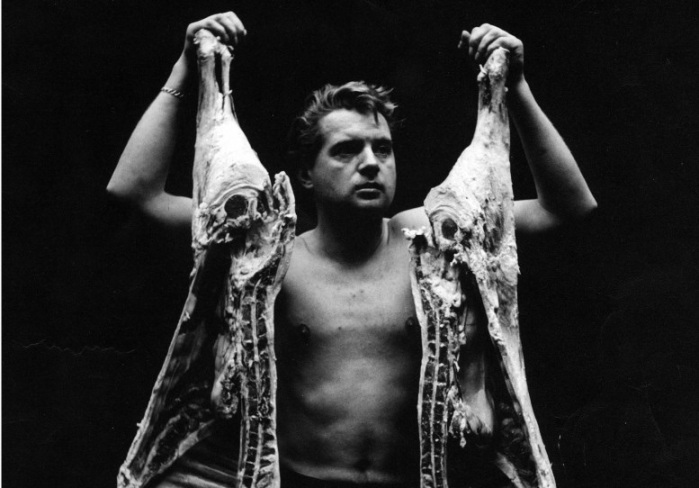
Francis Bacon
I am still on my journey of self discovery. And as explained earlier in the text, I am just as conditioned and influenced by my external environment as any other being yet when I am painting I am far away from this external environment since painting enables me to get closer to the truth; of myself and the world
by Nicholas Peart
23rd May 2016
(All rights reserved)
My work can be found by visiting my website; http://www.nicholaspeart.com
I like the way you have responded to the question about what your paintings are all about. Truly they are like music . . . one goes with it and one enjoys it, or one does not care much for the art work but gives it a cursory glance. That would be sad as I sincerely believe that one puts oneself in one’s creations, be it a painting or a poem or a piece of music. . . No one could just do any old thing, and for you, I can see that a great part of yourself goes into your works. Praise the Lord!
LikeLiked by 1 person
Very interesting to read about the space where your paintings come from Nick. I always thought of many different forms of indigenous art when I look at your work. Wonderful to have this meditative outlet to explore truth and beyond! In each work there is so much of yourself and so much of everything else. A fascinating process. Shine on, L
LikeLiked by 1 person
Thank you so much brother for your lovely words. Have a gas in Italy!! Big hugs from over here
LikeLiked by 1 person
Great post! I especially enjoyed reading the 2nd and 3rd paras.
LikeLiked by 1 person
Thank you Gitanjali! I really like your blog
LikeLike